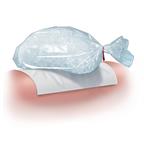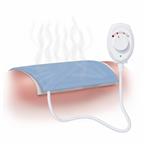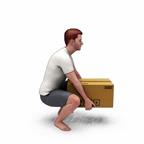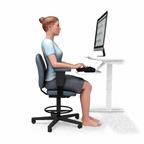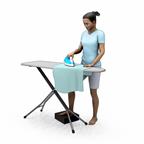Chronic Back Pain
Chronic back pain is back pain that lasts longer than 3 months. The cause of your back pain may not be known. Some common causes include:
Wear and tear (degenerative disease) of the bones, disks, or tissues that connect bones to each other (ligaments) in your back.
Inflammation and stiffness in your back (arthritis).
If you have chronic back pain, you may have times when the pain is more intense (flare-ups). You can also learn to manage the pain with home care.
Follow these instructions at home:
Watch for any changes in your symptoms. Take these actions to help with your pain:
Managing pain and stiffness
- If told, put ice on the painful area. You may be told to apply ice for the first 24–48 hours after a flare-up starts.
Put ice in a plastic bag.
Place a towel between your skin and the bag.
Leave the ice on for 20 minutes, 2–3 times per day.
- If told, apply heat to the affected area as often as told by your health care provider. Use the heat source that your provider recommends, such as a moist heat pack or a heating pad.
-
If your skin turns bright red, remove the ice or heat right away to prevent skin damage. The risk of damage is higher if you cannot feel pain, heat, or cold.
-
Try soaking in a warm tub.
Activity
-
Avoid bending and other activities that make the pain worse.
- Have good posture when you stand or sit.
When you stand, keep your upper back and neck straight, with your shoulders pulled back. Avoid slouching.
When you sit, keep your back straight. Relax your shoulders. Do not round your shoulders or pull them backward.
-
Do not sit or stand in one place for too long.
-
Take brief periods of rest during the day. This will reduce your pain. Resting in a lying or standing position is often better than sitting to rest.
-
When you rest for longer periods, mix in some mild activity or stretching between periods of rest. This will help to prevent stiffness and pain.
-
Get regular exercise. Ask your provider what activities are safe for you.
- You may have to avoid lifting. Ask your provider how much you can safely lift. If you do lift, always use the right technique. This means you should:
Medicines
-
Take over-the-counter and prescription medicines only as told by your provider.
-
You may need to take medicines for pain and inflammation. These may be taken by mouth or put on the skin. You may also be given muscle relaxants.
- Ask your provider if the medicine prescribed to you:
General instructions
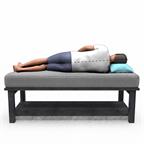
-
Sleep on a firm mattress in a comfortable position. Try lying on your side with your knees slightly bent. If you lie on your back, put a pillow under your knees.
-
Do not use any products that contain nicotine or tobacco. These products include cigarettes, chewing tobacco, and vaping devices, such as e-cigarettes. If you need help quitting, ask your provider.
Contact a health care provider if:
-
You have pain that does not get better with rest or medicine.
-
You have new pain.
-
You have a fever.
-
You lose weight quickly.
-
You have trouble doing your normal activities.
-
You feel weak or numb in one or both of your legs or feet.
These symptoms may be an emergency. Get help right away. Call 911.
This information is not intended to replace advice given to you by your health care provider. Make sure you discuss any questions you have with your health care provider.
